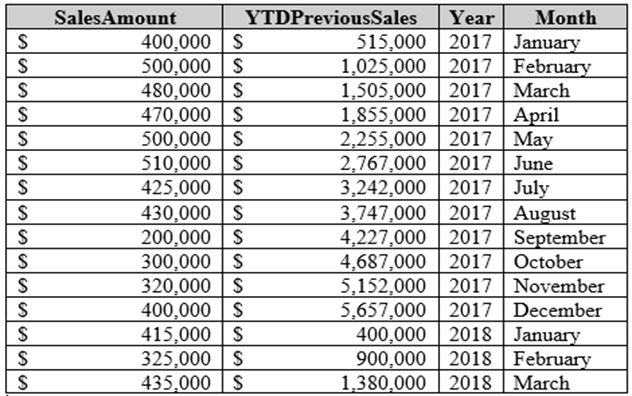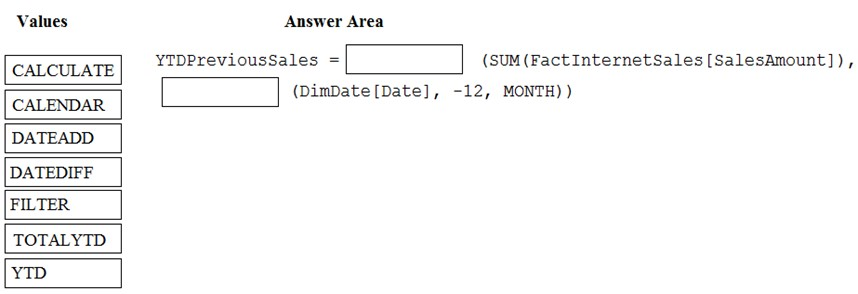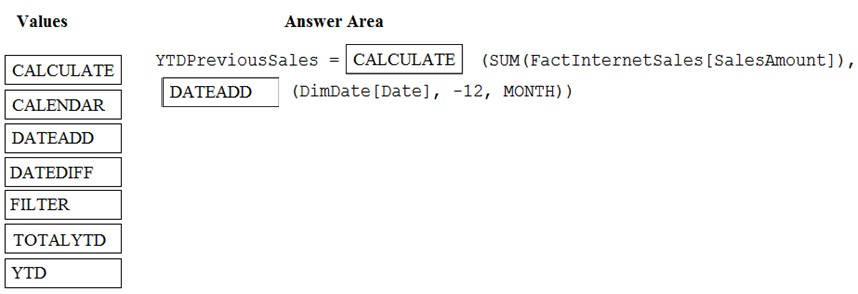

DRAG DROP -
You need to create a measure named YTDPreviousSales that will be used in a table visualization. YTDPreviousSales must show the year-to-date (YTD) sales of the previous year for the same month. A sample of the desired data is shown in the following table.
How should you complete the measure? To answer, drag the appropriate values to the correct targets. Each value may be used once, more than once, or not at all. You may need to drag the split bar between panes or scroll to view content.
NOTE: Each correct selection is worth one point.
Select and Place:

TiaanR
Highly Voted 5 years, 9 months agoIsrael2
4 years, 11 months agoexam_taker5
Highly Voted 5 years, 9 months agoSteveKarr
5 years, 9 months agogerrard
5 years, 6 months agogerrard
5 years, 6 months agosaw
5 years, 2 months agosaw
5 years, 2 months agonemanjaandic
Most Recent 4 years, 1 month agozwwdplay
4 years, 3 months agoLhouss
4 years, 4 months agoCDL
4 years, 5 months agoCDL
4 years, 5 months agoFenloh
4 years, 9 months ago123
4 years, 9 months agorainbowstuf
4 years, 10 months agoMange
4 years, 10 months agoAkaChilala
5 years, 5 months agoBrunobsv
5 years, 4 months agoJohnFan
5 years, 4 months agoJohnFan
5 years, 4 months ago